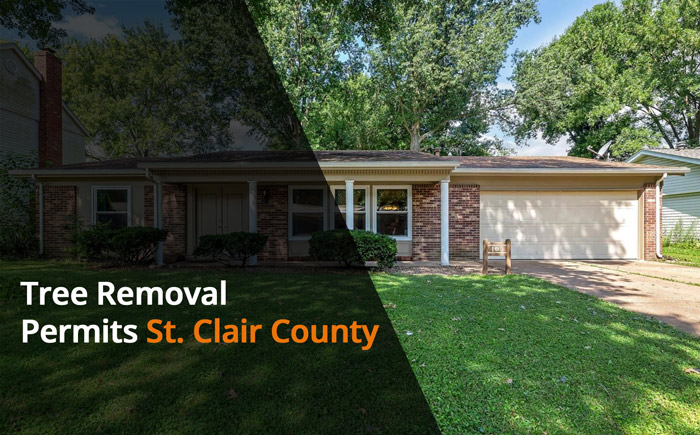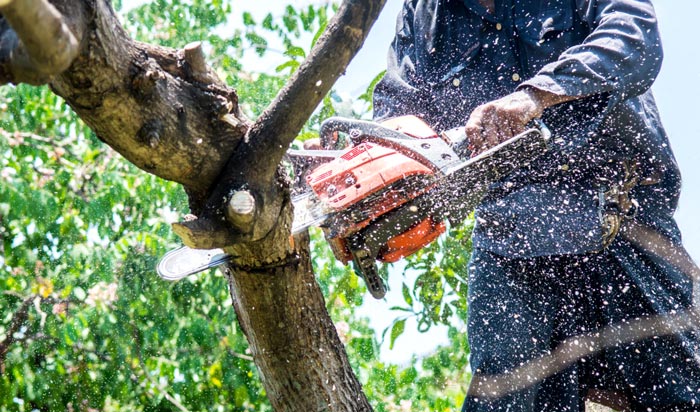Tree laws are like a secret code for protecting our leafy friends in St. Clair County. They make sure our trees grow strong and healthy. If you love seeing green around you, these rules are your best buddy. They’re not just words on paper; they’re magic spells that keep our airs clean and our landscapes pretty. Imagine walking through a forest without worrying about losing it tomorrow. That’s the peace these tree laws give us. And guess what? You’ll find out how these nifty guides can turn your backyard into a mini-forest sanctuary. So, keep reading if you want to become a tree-saving superhero in your neighborhood. You’ll discover how easy it is to keep our green pals thriving, with just a little know-how.
You will need a permit to remove, cut, plant, or trim some of the trees in the county.
Here is a summary that will enable you to easily understand which trees require a permit, regulations on public trees, penalties, any other tree guidelines required, and related areas.

For more info, go through St. Clair county tree ordinance guidelines.
What we cover
ToggleDo I need a permit to plant trees on private property in St. Clair County?
No. You are not required to get a permit to plant trees on private land unless it is any of the following plants.
- Willow
- Soft maple
- Common catalpa
- Poplar
- Boxelder
Do I need a permit to remove trees from my private property?
No. Unless the trees are significant or heritage trees.
Still not sure?
If you are still unsure, it might be best to speak to local tree services. They are all up to date on local laws and would be happy to give you free advice.
It’s worth noting they are unable to remove trees illegally as they would face heavy fines, so giving you correct information is in their best interests also.
Try this FREE Service

Go Tree Quotes is a free service that matches you with the top 3 local tree services. Based on hundreds of votes by previous customers, we rank local services ensuring you get great service at low prices.
Step 1: Scroll to the top of the page and enter your Zip code.
Step 2: Hit the orange button and proceed to answer a few quick questions about your tree job.
Step 3: Top-voted local tree services get in touch with some great advice and priced estimates.
There is no obligation to hire any of the tree services that we match you with.

Planting or removal of trees on public property in St. Clair County
It is illegal for anyone to remove, plant, or prune trees on public land in St. Clair County. Only authorized persons from the right city department will be allowed to plant, maintain, or remove such trees.
However, a private property owner may be in a position to plant, maintain, and remove trees growing on a street abutting their property right of way. In such cases, you still need to get a permit from the public works department.
The owner, agent, and contractor must also provide a liability insurance certificate that indicates cover of up to $50,000 on body injury, and an aggregated amount of $100,000 plus $5,000 for any property damage.
Tree planting for new dwelling sites in St. Clair County
According to the county tree preservation codes, whenever a dwelling site is constructed, a tee must be planted between the curb and sidewalk. It can also be planted on any approved public’s right of way, abutting the property in question except in cases where the street frontage is above 80ft in which case 1 tree will be planted every 75ft.
During this exercise, the owner of the site, and agent, and the contractor will have to seek a permit from the director of Public works. The Department of Public Works is also in a position to choose what type of tree to be planted.
City destroying infected trees in St. Clair
According to the county tree preservation codes, the city has the authority to destroy any infected trees. This is if the owner of the prohibited trees has been issued with a 10-day notice and has not complied.
In addition, the owner will be required to bear all the costs of destroying the trees.
The owner will have a period of 30 days to reimburse the funds to the county. If this period is due, then the city shall lien against the said land. The city assessor will add the cost charges on the property tax roll.
St. Clair County Penalties for Trees Codes Violations
Any person found guilty of breaching the city tree codes, shall pay a fine of up to $500, serve a jail term of 90 days, or both.
Are there noxious weeds in St. Clair county?
Yes. Here is a link that shows some of the noxious weeds you will find in St. Clair County.
https://library.municode.com/mi/codes/compilation-general_and_zoning/
St. Clair county prohibited species
Prohibited trees in St. Clair County are any trees or plants that have an adverse effect on the environment and people living in it. They include all the noxious weeds and the following species.
- Box elder (Acer Negundo)
- Elm (Ulmus)
- Poplar (Populus Sp.)
- Willow (Salix Sp.)











